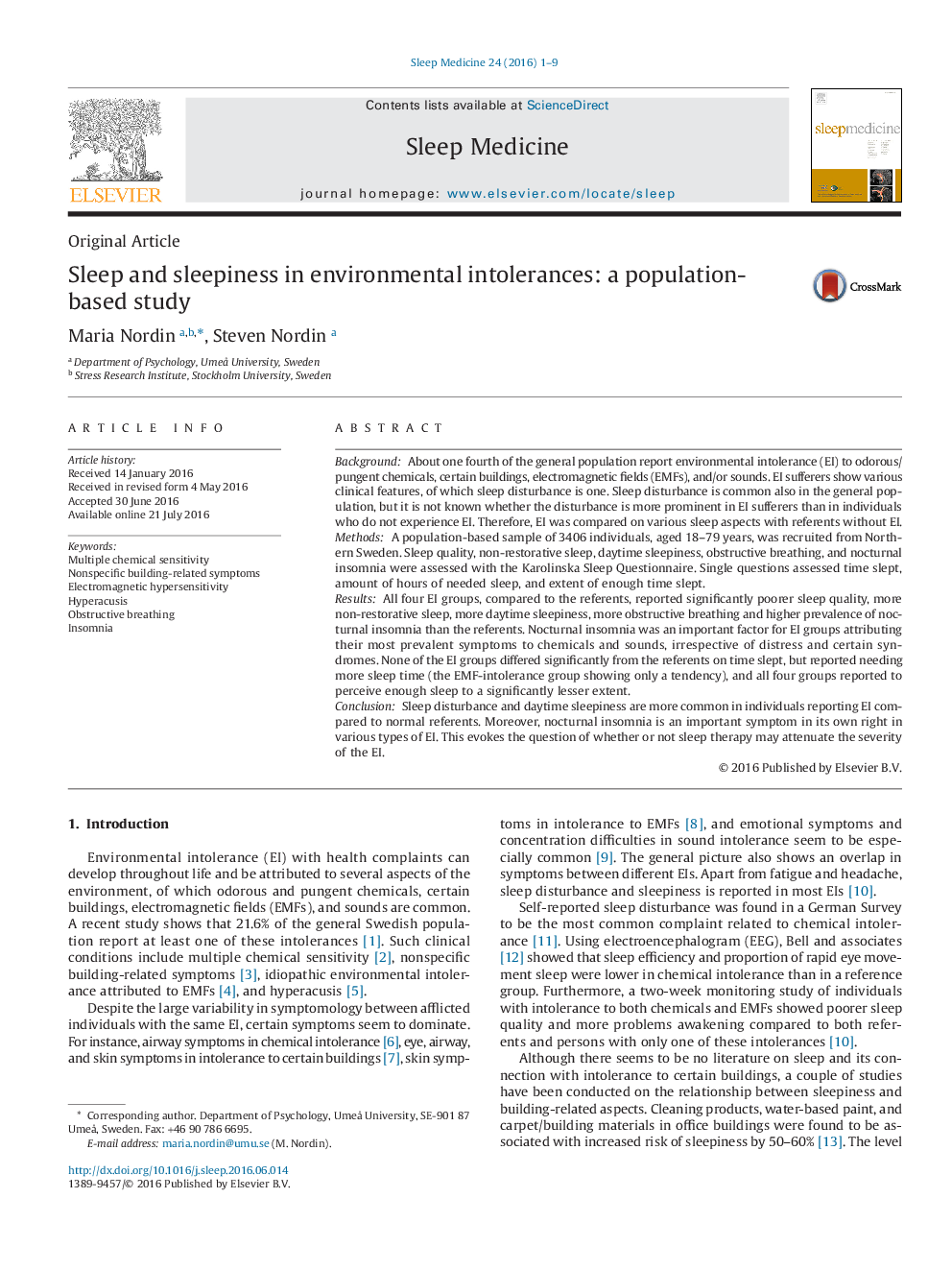| کد مقاله | کد نشریه | سال انتشار | مقاله انگلیسی | نسخه تمام متن |
|---|---|---|---|---|
| 6060032 | 1586484 | 2016 | 9 صفحه PDF | دانلود رایگان |
- Poor sleep is more common in environmental intolerance than in the normal population.
- Sleepiness is more common in environmental intolerance than in the normal population.
- Persons with environmental intolerance are at larger risk of insomnia.
- EI attributed to chemicals and sound is associated with insomnia regardless of distress and certain syndromes.
BackgroundAbout one fourth of the general population report environmental intolerance (EI) to odorous/pungent chemicals, certain buildings, electromagnetic fields (EMFs), and/or sounds. EI sufferers show various clinical features, of which sleep disturbance is one. Sleep disturbance is common also in the general population, but it is not known whether the disturbance is more prominent in EI sufferers than in individuals who do not experience EI. Therefore, EI was compared on various sleep aspects with referents without EI.MethodsA population-based sample of 3406 individuals, aged 18-79 years, was recruited from Northern Sweden. Sleep quality, non-restorative sleep, daytime sleepiness, obstructive breathing, and nocturnal insomnia were assessed with the Karolinska Sleep Questionnaire. Single questions assessed time slept, amount of hours of needed sleep, and extent of enough time slept.ResultsAll four EI groups, compared to the referents, reported significantly poorer sleep quality, more non-restorative sleep, more daytime sleepiness, more obstructive breathing and higher prevalence of nocturnal insomnia than the referents. Nocturnal insomnia was an important factor for EI groups attributing their most prevalent symptoms to chemicals and sounds, irrespective of distress and certain syndromes. None of the EI groups differed significantly from the referents on time slept, but reported needing more sleep time (the EMF-intolerance group showing only a tendency), and all four groups reported to perceive enough sleep to a significantly lesser extent.ConclusionSleep disturbance and daytime sleepiness are more common in individuals reporting EI compared to normal referents. Moreover, nocturnal insomnia is an important symptom in its own right in various types of EI. This evokes the question of whether or not sleep therapy may attenuate the severity of the EI.
Journal: Sleep Medicine - Volume 24, August 2016, Pages 1-9
